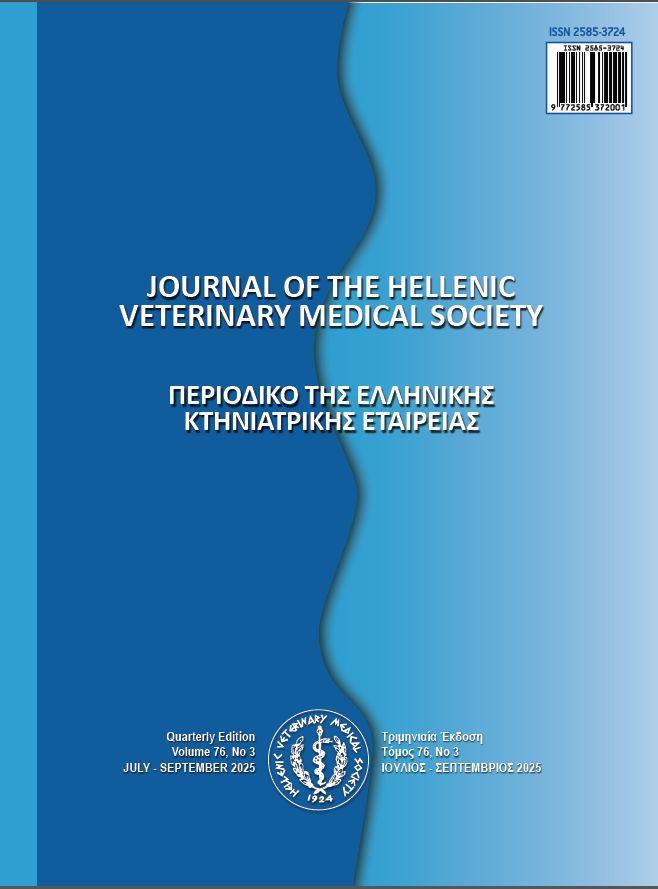Pathological characterization of lung lesions and molecular detection of Mycoplasma spp. in slaughtered goats
Resumen
Mycoplasmosis is a chronic respiratory disease of goat causing huge economic loss to the farmers. A slaughter house based study was carried out from December 2023 to March2024 to characterize the gross, histopathological lesions in lungs and also to confirm the role of Mycoplasma spp. by PCR in slaughtered goats in Puducherry, India. Out of 350 carcasses examined, pneumonic lesions were recorded in 104 cases accounting for 29.7 %. All the affected animals in the present study were above 1 year of age. Sex wise lesions were recorded more in males (60.5%, 63/104) than females (39.4% 41/104). Breed wise, the occurrence of lung lesions were: salem black (28.8%, 30/104), kodiaadu (26.9%, 28/104) and non-descript (44.2%, 46/104). Gross examination revealed emphysematous, edematous and grey to red areas of consolidation with exudation from the cut surface. Representative tissue samples were collected and fixed in 10% formalin and processed by routine paraffin embedding techniques. Histopathological examination of affected lung tissue showed extensive area of haemorrhage, pleural thickening, bronchus associated lymphoid tissue [BALT] hyperplasia, septal thickening, epithelial hyperplasia and mononuclear infiltration. From histopathologically confirmed pneumonic cases, 6 samples were subjected to PCR targeting the 16srRNA specific for Mycoplasma spp. Out of 6 cases, four samples yielded an expected amplicon size of 450 bp (66.66%) confirming the involvement of Mycoplasma spp.
Article Details
- Cómo citar
-
Vishnubashini , I., Priyadharshini , R., Praveen K, Poobitha S, Uma, S., Srinivas, M., Lakkawar, A., & Raja, K. (2025). Pathological characterization of lung lesions and molecular detection of Mycoplasma spp. in slaughtered goats. Journal of the Hellenic Veterinary Medical Society, 76(3), 9777–9784. https://doi.org/10.12681/jhvms.40322
- Número
- Vol. 76 Núm. 3 (2025)
- Sección
- Research Articles

Esta obra está bajo una licencia internacional Creative Commons Atribución-NoComercial 4.0.
Authors who publish with this journal agree to the following terms:
· Authors retain copyright and grant the journal right of first publication with the work simultaneously licensed under a Creative Commons Attribution Non-Commercial License that allows others to share the work with an acknowledgement of the work's authorship and initial publication in this journal.
· Authors are able to enter into separate, additional contractual arrangements for the non-exclusive distribution of the journal's published version of the work (e.g. post it to an institutional repository or publish it in a book), with an acknowledgement of its initial publication in this journal.
· Authors are permitted and encouraged to post their work online (preferably in institutional repositories or on their website) prior to and during the submission process, as it can lead to productive exchanges, as well as earlier and greater citation of published work.



